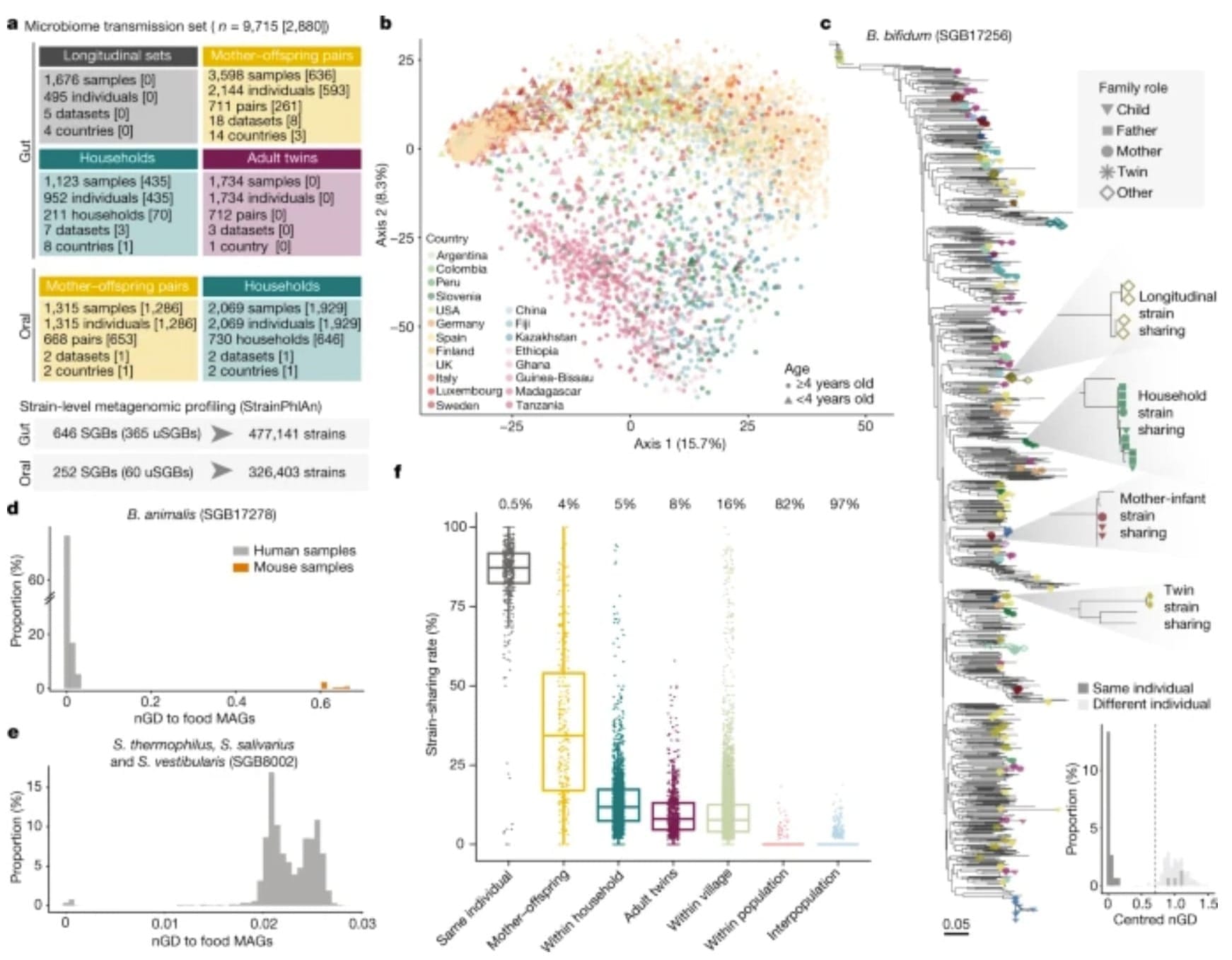The establishment and maintenance of your microbiome is mostly a family affair, but be careful who you swap spit with!
Being in close contact with other people is just human nature, so it makes sense that the bugs who colonize us also tend to colonize the people around us.

And maybe that’s not super surprising!
Being in close contact with other people is just human nature, so it makes sense that the bugs who colonize us also tend to colonize the people around us.
Our microbiomes and their composition can also be determined by our diets, how much we exercise, or other external environmental and lifestyle factors that alter the unique microenvironments in which they live.
We hear the most about the gut microbiome, but there are many different habitats that bacteria, fungi, and even viruses can occupy in and around our bodies.
Each crevice or orifice has its own!
And to better understand these microbiomes and how they affect human health, we need to understand how they're established.
We know that our first microbiomes are acquired from our moms, but we don’t keep the same ones forever!
And it has been hypothesized that these changes happen through interactions that humans have with other individuals.
However, large scale studies have not been done to explore how microbiome ‘seeding’ occurs at the individual, family, community, and population level.
That’s where today’s paper comes in!
The researchers sought to better understand how our oral and gut microbiomes are established and diversify over time.
The figure below shows a high level overview of their findings. These are summarized in b) where the compositions of microbiomes seem to cluster by geographic region and in f) where microbiomes are least conserved between populations with increasing conservation as you move from the population level to the individuals that live together in the same household.
The researchers found that children share on average 50% of the same microbes as their mother for their first year of life.
This was reduced to 27% at ages 1-3, stabilizing to about 16%.
Interestingly, even adult children who no-longer cohabitate with their mothers still shared about 16% of those microbes, but shared only 8% with other unrelated females!
This is most likely due to family members continuing to share microbiomes with one another because they see each other most often.
And that extends to the other interesting finding that microbiomes were most similar between individuals who lived together (duh…) but that oral microbiomes were best conserved between partners!
Presumably because of all of the kissing.
That should bring a whole new perspective to the shouts of, “EWWWW, GROSS!” the next time your kids catch you and your partner swapping saliva!
Read the full issue of Omic.ly Premium 14


